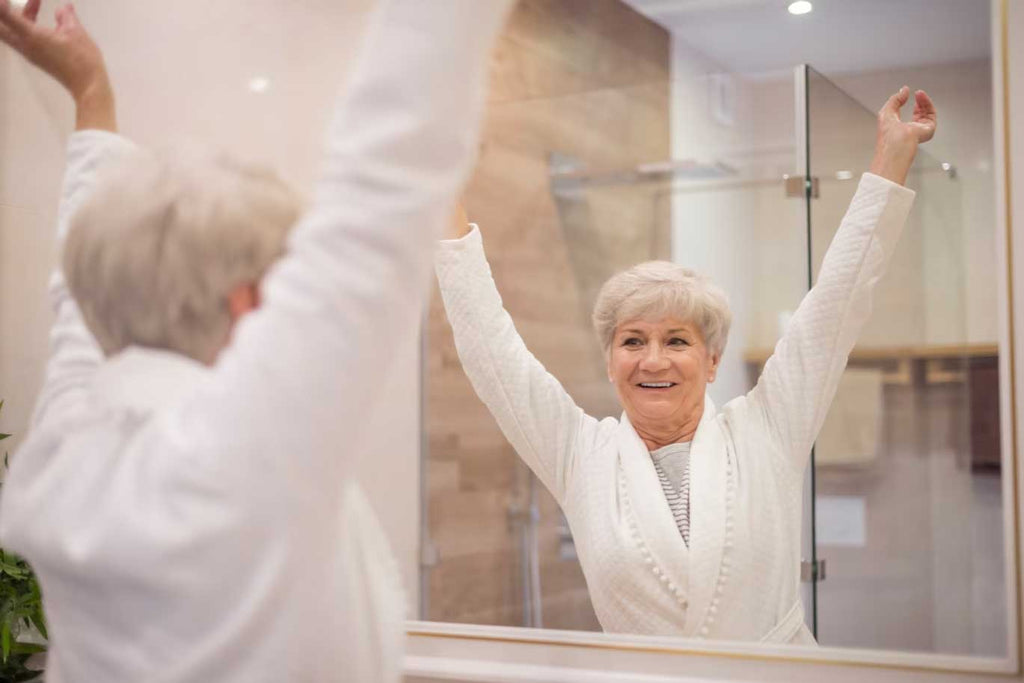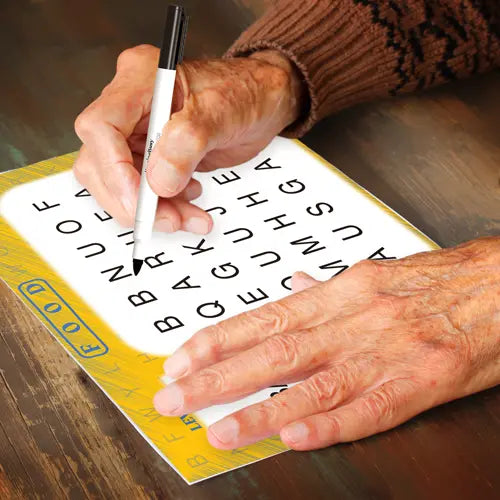
Dementia is a debilitating disease that affects millions of people worldwide. One of the most common symptoms of dementia is the inability to maintain personal hygiene, including bathing. This can be a challenging and frustrating aspect for both the person with dementia and their caregivers.
Let's explore the stage of dementia where not bathing occurs and provide insight into how to handle this situation with empathy and compassion.
The Stage of "Not Bathing" in Dementia
As dementia progresses, a person's ability to perform daily tasks declines. This decline can lead to difficulty with hygiene and bathing.
The stage of dementia where not bathing occurs is typically the moderate to severe stage. At this stage, the person with dementia may struggle to remember how to bathe or may become overwhelmed by the task.
They may also resist bathing due to fear or discomfort. This can be a challenging situation for caregivers to navigate.
Middle-Stage Dementia: Increasing Care and Assistance Needed
Middle-stage dementia is marked by the onset of significant memory loss and cognitive decline. The symptoms can be challenging for caregivers and family members to manage, but understanding the disease's nature and progression can help them provide better care.
Symptoms
-
Memory loss: One of the prominent symptoms of middle-stage dementia is the inability to remember recent events or details about their life. They may frequently ask the same questions or forget important dates.
-
Communication difficulties: Dementia can also affect an individual's ability to communicate effectively. They may struggle to find the right words or have difficulty understanding what others are saying.
-
Disorientation: The individual may become disoriented and lose track of time or space. They may forget where they are or how they got there.
-
Difficulty with daily tasks: As the disease progresses, individuals with middle-stage dementia may have difficulty performing basic daily tasks such as bathing, dressing, or cooking.
According to the Alzheimer's Association, "during middle-stage dementia, the person with dementia will need more care and assistance." This is because they may become increasingly dependent on others for their daily needs.
As the disease progresses into middle-stage dementia, caregivers must provide more care and assistance to support the person with dementia's daily needs.
As a caregiver, it is important to recognize that the person with dementia is not intentionally being difficult. It is also important to seek support from healthcare professionals and other caregivers who can provide guidance and resources for managing this stage of the disease.
Why Not Bathing Occurs: Common Reasons and Solutions
Bathing is an essential aspect of personal hygiene, but for people with dementia, it can be a difficult and challenging task. Refusing to bathe or forgetting to bathe is a common behavior among individuals with dementia. Understanding the reasons behind this behavior can help caregivers provide better care and support.
Common Reasons
1. Fear
Fear is one of the most common reasons why a person with dementia may refuse or forget to bathe. They may be afraid of falling or slipping in the tub, being cold, or the process of bathing itself. The noise and the running water from the shower can also be overwhelming.
2. Discomfort
People with dementia may experience pain or discomfort due to arthritis, which makes it difficult to get in and out of the tub or wash themselves. They may also be sensitive to the temperature of the water or the feel of the soap on their skin.
3. Loss of Independence
Bathing can be a personal and private activity that individuals with dementia may find embarrassing or uncomfortable when others are present. This loss of independence can cause them to resist taking a bath.
Solutions
As a caregiver, there are several strategies you can use to encourage a person with dementia to bathe:
1. Address their fears
Make sure that the bathroom is safe and free from hazards that could cause falls. Consider using a bath mat, handrails, or shower chairs to support them during the bath.
2. Address their discomfort
Ensure that the water temperature is comfortable, and use gentle soaps or body washes that won't irritate their skin. If they have arthritis, consider using a sponge or washcloth instead of making them get in and out of the tub.
3. Respect their independence
Encourage them to do as much as they can on their own, such as washing their face or hair. Consider giving them privacy by leaving the bathroom door open but staying within earshot.
Refusing to bathe or forgetting to bathe is a common behavior among individuals with dementia. Addressing the reasons behind this behavior, such as fear, discomfort, and loss of independence, can help caregivers provide better care and support while maintaining the person's dignity and well-being.
How to Handle Not Bathing in Individuals with Dementia: Strategies and Tips
Not bathing is a common behavior among individuals with dementia, and it can be a sensitive and challenging situation for caregivers. Approaching the situation with empathy and compassion can help make the process less stressful and more comfortable for both the person with dementia and the caregiver. Here are some tips and strategies for handling not bathing:
1. Identify the Reason
The first step in addressing the issue of not bathing is to identify the reason behind it. Understanding why the person with dementia is refusing or forgetting to bathe can help you find a solution that works for them. Some common reasons for not bathing include fear, discomfort, and loss of independence.
2. Create a Routine
Establishing a routine for bathing can be helpful. A consistent and predictable routine can help the person with dementia feel more comfortable with the process. It also makes it easier for caregivers to incorporate other activities into the daily schedule.
3. Use Visual Cues
Visual cues can be helpful in guiding the person with dementia through the bathing process. Pictures or step-by-step instructions can help them remember what to do and make the process less overwhelming.
4. Make It Enjoyable
Making bathing an enjoyable experience can make it more appealing for the person with dementia. Playing music, using scented soaps, or incorporating other enjoyable activities can make the experience more pleasant and reduce resistance.
5. Be Patient
It's essential to approach the situation with patience and understanding. The person with dementia may be resistant or uncomfortable with bathing, but it's important to remain calm and compassionate throughout the process. Using positive reinforcement, such as rewarding them after completing a bath, can also be helpful in encouraging them.
6. Seek Professional Help
If none of these strategies work, seeking professional help from a healthcare provider or a specialist in dementia care may be necessary. They can provide guidance and resources for managing the situation effectively.
Handling not bathing in individuals with dementia can be challenging, but it's essential to approach the situation with empathy and compassion. Understanding the reasons behind not bathing, creating a routine, using visual cues, making it enjoyable, and being patient can all help make the process less stressful and more comfortable. If needed, seeking professional help can also be an important step in managing the situation.
The Benefits of Maintaining Personal Hygiene for Overall Health and Well-being
Maintaining personal hygiene is essential for overall health and well-being, especially for people with dementia. Bathing helps to remove harmful bacteria from the skin, which can lead to infections. Keeping the body clean also helps to prevent unpleasant odors and skin irritations.
In addition to physical benefits, maintaining personal hygiene can also have mental and emotional benefits. Taking a bath or shower can be relaxing and improve mood. Feeling clean and fresh can boost self-esteem and confidence.
For people with dementia, maintaining personal hygiene can help them feel more connected to their sense of self. It helps them maintain dignity and independence by allowing them to take care of themselves as much as possible.
As a caregiver, it's important to encourage and support the person with dementia in maintaining their personal hygiene. By doing so, you are promoting their overall health and well-being while respecting their autonomy and dignity.
Tips for Creating a Comfortable and Safe Bathing Environment
Creating a comfortable and safe bathing environment is essential when caring for someone with dementia. Here are some tips to help you create a safe and relaxing atmosphere:
Adjust Water Temperature
The water temperature should be warm, but not too hot or cold. People with dementia may have difficulty sensing extreme temperatures, so it's important to test the water before they get in. Using a thermometer can help ensure that the water is at a safe temperature.
Use Non-Slip Mats
Slips and falls are a common concern during bathing. Using non-slip mats in the bathtub or shower can provide additional traction and reduce the risk of falls. You can also consider using a bath chair or bench to provide extra stability.
Minimize Distractions
People with dementia may become easily overwhelmed by noise or distractions during bathing. To create a calming environment, minimize distractions such as loud music or bright lights. Soft music or gentle lighting can help create a soothing atmosphere.
Respect Privacy
Respecting privacy is crucial when caring for someone with dementia during bathing. Consider leaving the bathroom door open but staying within earshot to provide support if needed. If they prefer more privacy, consider providing them with a robe or towel to cover themselves while getting in and out of the tub.
By following these tips, you can create a comfortable and safe environment for someone with dementia during bathing. It's essential to approach the situation with empathy and understanding while promoting their overall health and well-being.
Making Bathing a Sensory Experience
Bathing can be an opportunity to engage the senses and make it a more enjoyable experience for individuals with dementia. Here are some ways to create a sensory-rich environment during bath time:
1. Use Scented Oils
Adding scented oils to the water or using a diffuser in the bathroom can help create a calming and relaxing atmosphere. Lavender, chamomile, and eucalyptus are all scents that are known for their therapeutic properties.
2. Play Calming Music
Playing soft and calming music can also help create a relaxing atmosphere during bath time. Classical music or instrumental music without lyrics is often recommended as it can soothe the mind without being too distracting.
3. Provide Soft Towels and Robes
After bathing, providing soft towels and robes can help individuals with dementia feel comfortable and relaxed. Soft textures such as cotton or bamboo can provide tactile stimulation that feels soothing on the skin.
4. Use Gentle Lighting
Harsh lighting or bright lights can be overwhelming for individuals with dementia during bath time. Using soft lighting or dimmer switches can help create a calming environment.
By engaging the senses during bath time, caregivers can promote relaxation and comfort for individuals with dementia while maintaining their personal hygiene.
Conclusion
Not bathing is a common symptom of dementia, particularly in the moderate to severe stages. It can be a challenging situation for caregivers to navigate, but it's essential to approach the situation with empathy and compassion.
By understanding the reasons why not bathing occurs and using strategies to make bathing more comfortable and enjoyable, caregivers can help the person with dementia maintain their personal hygiene with dignity and respect.
Key Takeaways
-
Bathing can be a challenging and sensitive situation for individuals with dementia and their caregivers.
-
Understanding the reasons why not bathing occurs, such as fear, discomfort, and loss of independence, can help caregivers provide better care and support.
-
Creating a routine, using visual cues, making it enjoyable, and being patient are all strategies that can make bathing more comfortable for individuals with dementia.
-
Maintaining personal hygiene is essential for overall health and well-being, especially for people with dementia. It helps to remove harmful bacteria from the skin and prevent unpleasant odors and skin irritations.
-
Making bathing a sensory experience by engaging the senses in various ways can promote relaxation and comfort for individuals with dementia while maintaining their personal hygiene.
-
Caregivers should approach the situation of not bathing with empathy and compassion while promoting the person's overall health and well-being. Seeking professional help may be necessary if these strategies do not work.
Keeping Busy: Providing the Best Possible Care for People with Dementia
At Keeping Busy, our mission is to provide the best possible care for individuals with dementia. We understand the importance of engaging activities in promoting well-being and independence. Our carefully designed products, including board games, crossword puzzles, and matching games, are aimed at stimulating the mind, fostering social interaction, and encouraging physical activity.
Founded by a caregiver with extensive experience in dementia care, we have become a trusted source of support for those with Alzheimer's and other types of dementia. Our founder, who is a trainer for "DementiAbility Methods: The Montessori Way," has conducted workshops for facility staff, emphasizing person-centered care that respects the dignity and autonomy of individuals with dementia.
At Keeping Busy, we firmly believe that every person, regardless of their cognitive abilities, deserves to live a fulfilling life. Join us in our mission by exploring our wide range of products and resources today.




